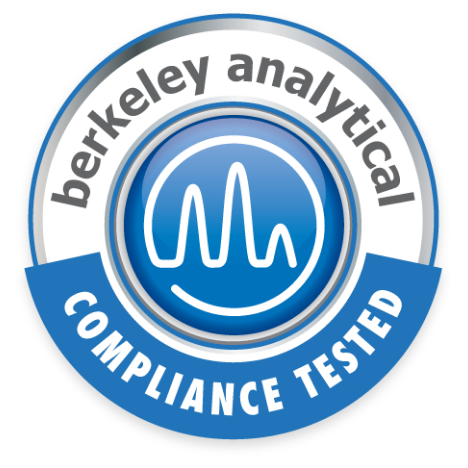VOC Emissions from Spray Polyurethane Foam
Off Gassing from SPF Insulation May Impact Indoor Air Quality
Spray polyurethane foam (SPF) insulation is the fastest growing segment of the building insulation market. This growth rate is due in part to government regulations mandating more energy efficient structures.
SPF insulation has characteristics that make it unique among building products. In particular, SPF insulation is made onsite in a building by reacting two chemical mixtures. As the chemicals react, an expanding foam is created. Initial curing occurs rapidly to form a rigid product. The foam provides insulation properties and creates an air infiltration and moisture barrier. The two chemical components are an “A” side typically comprised of methylene diphenyl diisocyanate (MDI) and polymeric methylene diphenyl diisocyanate (pMDI) and a "B" side that is a mixture of polyols, catalysts, blowing agent, flame retardant, and surfactants. Professional applications of open-cell and closed-cell SPF insulation are performed by trained workers using a high-pressure spray system and wearing personal protective equipment. SPF manufacturers typically provide guidance on building ventilation and other engineering controls during spraying, worker re-entry times following applications and, in the case of occupied buildings, re-occupancy times for residents and the general population.
Because the product is produced onsite with highly reactive chemicals there are concerns about potential chemical exposures. The U.S. EPA discusses potential exposures, factors that may influence exposures and how consumers can reduce exposure risks. To better understand the curing times for SPF insulation and to investigate potential off gassing of volatile organic chemicals (VOCs) from SPF insulation, the EPA recommends product testing using CDPH Standard Method V1.2. The EPA also acknowledges that the full spectrum of chemical emissions from SPF insulation is not well characterized and that more research is needed on this topic. In the U.S., ASTM Subcommittee D22.05 on indoor air has worked to develop several new testing methods for VOCs, amine catalysts, and isocyanates from SPF insulation in both micro-scale and full-scale chambers.
VOC Emission Testing Services for SPF Insulation
Manufacturers and other companies can address a number of potential consumer concerns about chemical off gassing from SPF insulation by testing these products for VOC emissions. Berkeley Analytical (BkA) provides several VOC emissions testing options for SPF insulation. All of the standards listed here are in the scope of our ISO/IEC 17025 accreditation:
- CDPH Standard Method V1.2 (CA Section 01350). This widely recognized voluntary test method measures the emissions of VOCs from SPF insulation 14 days after the product is applied. It addresses concerns about potential chronic exposures to chemicals that can be measured by the method. BkA recommends following standardized procedures for preparing, packaging and shipping of SPF samples as described in ASTM D7859, Standard Practice for Spraying, Sampling, Packaging, and Test Specimen Preparation of Spray Polyurethane Foam (SPF) Insulation for Testing of Emissions Using Environmental Chambers;
- CAN/ULC-S774. This Canadian standard specifies procedures for measuring VOC emissions of VOCs from SPF insulation periodically over a period of 30 days following product application. Chamber tests are conducted at assumed worst case conditions of 40°C and 50% relative humidity. The data are assessed by toxicologists to estimate safe building re-entry and re-occupancy times. This testing is required by the Canadian Construction Materials Centre (CCMC) to demonstrate the conformity of SPF products to the National Building Code of Canada and to Canadian provincial building codes;
- ASTM D7706, Standard Practice for Rapid Screening of VOC Emissions from Products Using Micro-Scale Chambers. Micro-scale chambers are unique in that their small size and operation at moderately elevated temperatures facilitate rapid equilibration and shortened testing times. They are primarily used for the rapid screening of VOC emissions from products. Their small size makes them particularly useful for evaluating VOC emissions from field-collected SPF insulation samples obtained using standard hole saws. Another potential advantage of micro-chambers is that the use of elevated temperatures facilitates screening tests for emissions of some semi-volatile VOCs (SVOCs) such as more volatile halogenated organo-phosphate flame retardants;
- ASTM D8142, Standard Test Method for Determining Chemical Emissions from Spray Polyurethane Foam (SPF) insulation using Micro-scale Environmental Test Chambers. This test method is intended primarily for newly prepared samples of SPF insulation and can be used by manufacturers to evaluate VOC emissions from new or revised formulations. It also can be used for field-collected samples of applied insulation. Test specimens are maintained in micro-scale chambers at 35°C operated with dry air. Air samples for VOCs are collected are collected in duplicate at 2 h and 24 h elapsed times. VOCs are analyzed by U.S. EPA Method TO-17 and aldehyde samples are analyzed by ASTM D5917. Target VOCs include blowing agents, allyl chloride, organic solvents, amine catalysts, and TDCP flame retardants.


